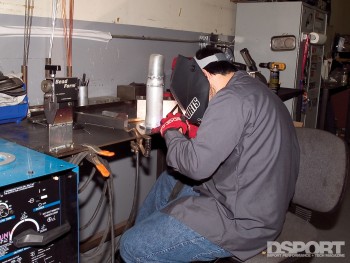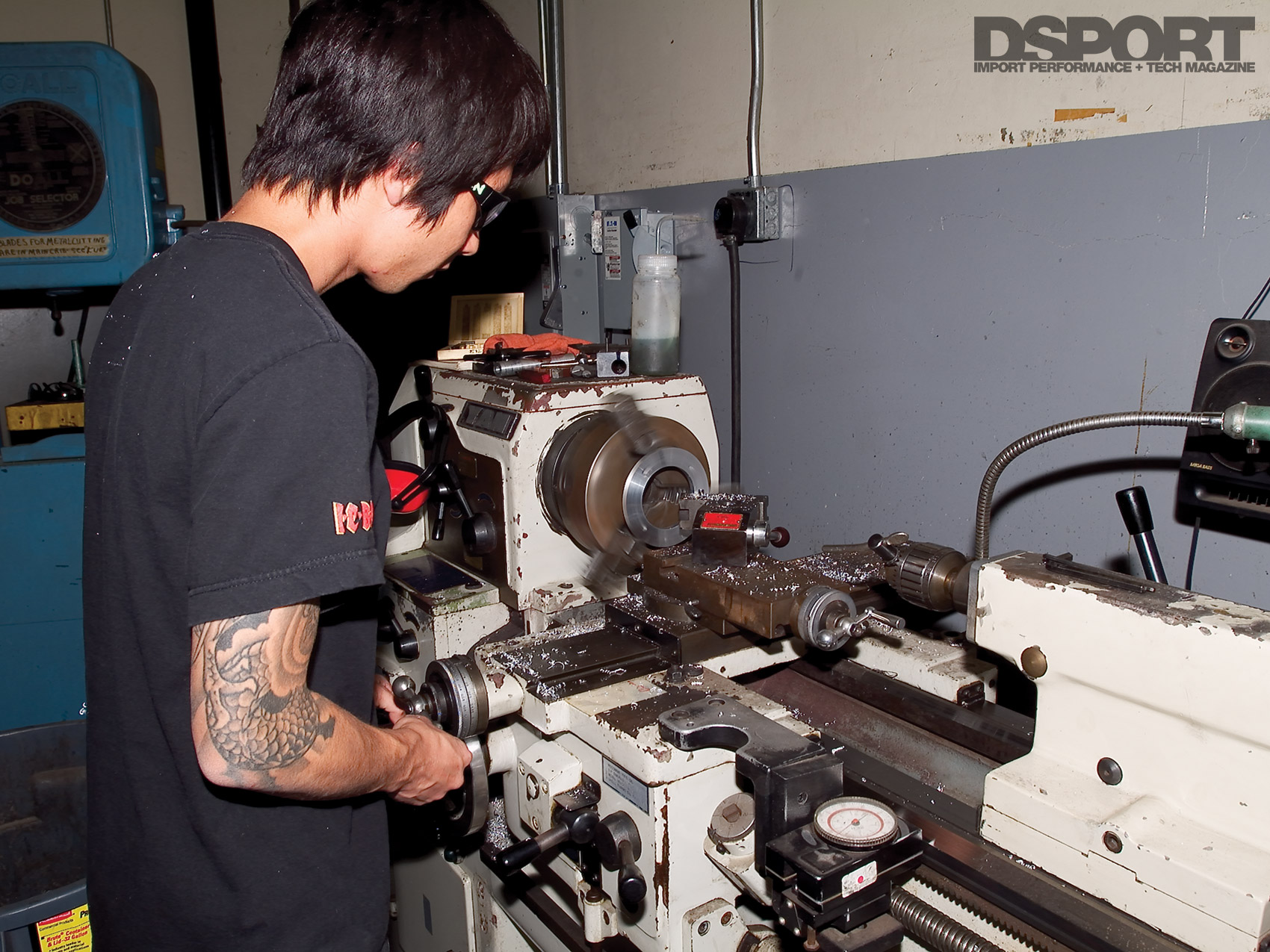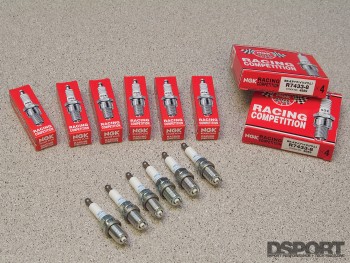Last issue, we said “when we get back on the dyno, we won’t be surprised to see 500-plus horsepower on 91-octane with a boost and power curves that we never believed possible with turbos so big. As predicted, we accomplished our mission with 505 horsepower registering on the dyno after fixing our exhaust leak, crafting a new intake system and spending some more time on the dyno. This taste of success motivated us to make a long overdue trip to the dragstrip.
Text & Photos by Michael Ferrara
Dyno Time

 Our previous visit to the dyno proved to be more educational than entertaining. We discovered that our intake system could pose a major restriction depending on the type of filter used. To eliminate this frustration, we called upon Burns Stainless of Costa Mesa, California to obtain the 6061 aluminum U-bends that we would need to build a custom intake. The A’PEX Integration master catalog helped us locate the largest Power Intake filters that they offer (P/N 500-A021). These filters have a 160mm base with a 90mm inlet. A pair of these filters and the U-bends from Burns Stainless provided the raw materials for Jensen Oda and Lanny Higa of A’PEX Integration to build the intake system. We saved a great deal of time by measuring all of our critical components and by designing on paper the system we would build. We determined that the turbochargers would need a 70mm connection at the inlet while the air filters would require an 82mm diameter. To accomplish this, a short piece of 70mm tubing was “swedged” up to 75mm. A 70mm elbow was then section and welded to the 70mm-to-75mm transition. Then a piece of 75mm that was swedged to 82mm on our end was welded to our custom adapter for the filter. If you are confused, a look at the pictures should help. The bottom line is that you should always know both the beginning and the end of the intake system before working on the middle. It will help you to get the right parts the first time.
Our previous visit to the dyno proved to be more educational than entertaining. We discovered that our intake system could pose a major restriction depending on the type of filter used. To eliminate this frustration, we called upon Burns Stainless of Costa Mesa, California to obtain the 6061 aluminum U-bends that we would need to build a custom intake. The A’PEX Integration master catalog helped us locate the largest Power Intake filters that they offer (P/N 500-A021). These filters have a 160mm base with a 90mm inlet. A pair of these filters and the U-bends from Burns Stainless provided the raw materials for Jensen Oda and Lanny Higa of A’PEX Integration to build the intake system. We saved a great deal of time by measuring all of our critical components and by designing on paper the system we would build. We determined that the turbochargers would need a 70mm connection at the inlet while the air filters would require an 82mm diameter. To accomplish this, a short piece of 70mm tubing was “swedged” up to 75mm. A 70mm elbow was then section and welded to the 70mm-to-75mm transition. Then a piece of 75mm that was swedged to 82mm on our end was welded to our custom adapter for the filter. If you are confused, a look at the pictures should help. The bottom line is that you should always know both the beginning and the end of the intake system before working on the middle. It will help you to get the right parts the first time.
Back on the dyno, the intake system performed even better than we expected. When first installed on the vehicle, our boost-duty cycles were still cranked up from our failed attempt at ma-king the “carpet” funnels air-intake system perform. As a result, boost pressure rocketed to 23 psi, overshooting our desired 21psi level. Once we turned the duty cycle back down to a normal setting, we still found that the new air intake system picked up boost response. We realized full boost nearly 500 rpm earlier than before. On the power end, the intake system provided a peak horsepower increase of 20 horsepower. This power increase was the result of using larger filters and removing the mass-air sensors that were previously in place. This change alone took horsepower just under 460 horsepower at the wheels.
A fresh set of NGK racing plugs (R7433-8) smoothed out the power curve and unleashed another 8 horsepower. Additional tuning of the Power FC’s ignition and fuel delivery added the extra 40 horsepower that took the power to the 505 mark.




